

| ©2005 Ms D E Ashdown |
| (You are not permitted to copy any illustrations from this site - please note copyright warning on Home Page) |
|
DIFFERENT BLAZES, DIFFERENT DENSITY OF BLACK This sequence of 6 drawings demonstrates the optical illusions caused by varying blazes on a classical Papillon head, as well as the fact that there is more than one shade of black. All are taken from the same template, difficult as this may to believe.
|
|
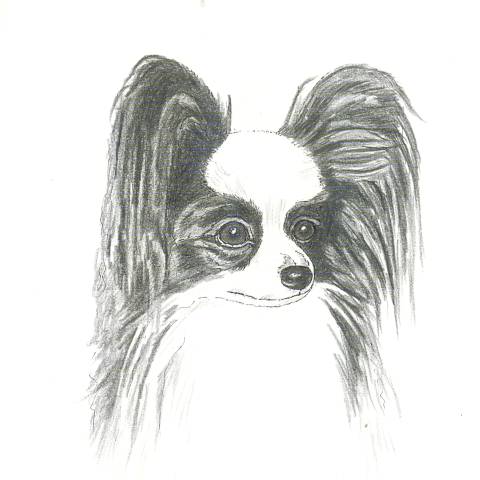 |
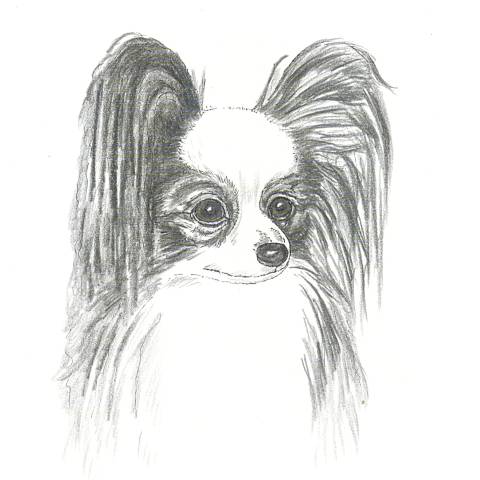 |
| A | B |
|
A shows the dog with a fairly narrow blaze at the stop, widening to a full, even white blaze across the skull. The muzzle is basically white with black fill in under the eyes. The dog is a good black, contrasting well with the clear white markings. This type of blaze is very flattering to a dog with a good stop and a narrow muzzle, accentuating the contrast between width of skull and abruptly fine muzzle. B is identical to A but the dog is silvery black, verging on grey. The contrast of colours is less vivid but still well defined. Some dogs have this naturally other b/w dogs become more silvery with age.
|
|
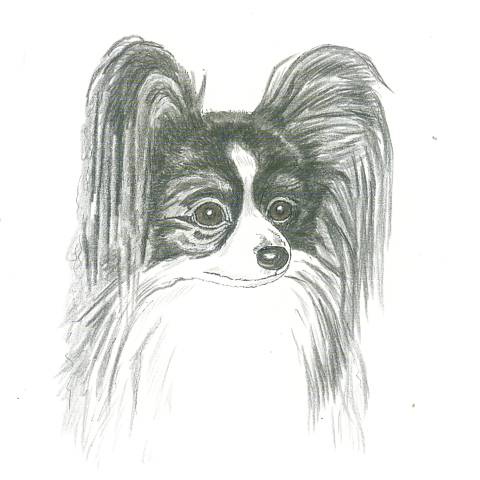 |
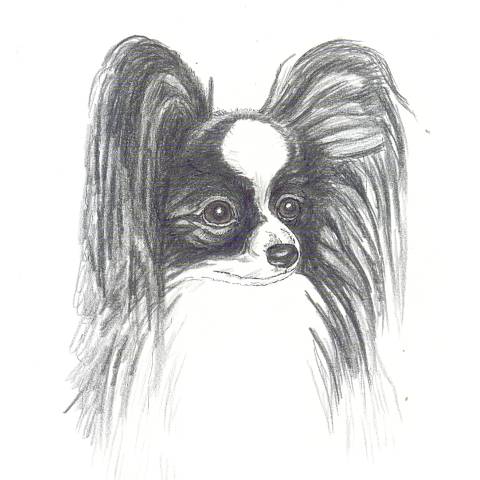 |
| C | D |
|
C is a version with more of a charcoal, matt black colouring and a much narrow blaze to the forehead, not extending the length of the skull. This is also attractive and flattering to a good head. In D the forehead blaze is comparatively wide but smaller than a full forehead blaze. The muzzle marking is less eve. The black is dense. The fact that the black markings extends under the eyes and well down the cheek again accentuates the fineness of muzzle but there is less of a stark contrast between muzzle and skull
|
|
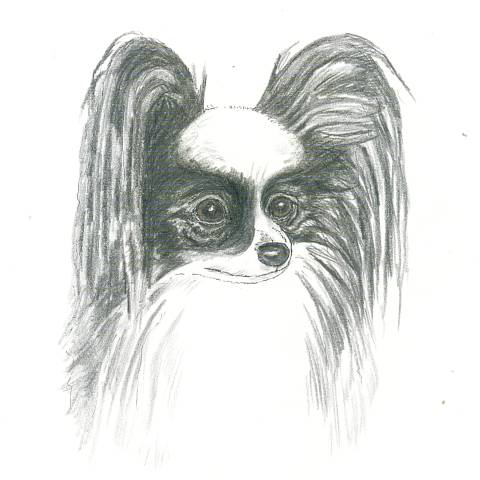 |
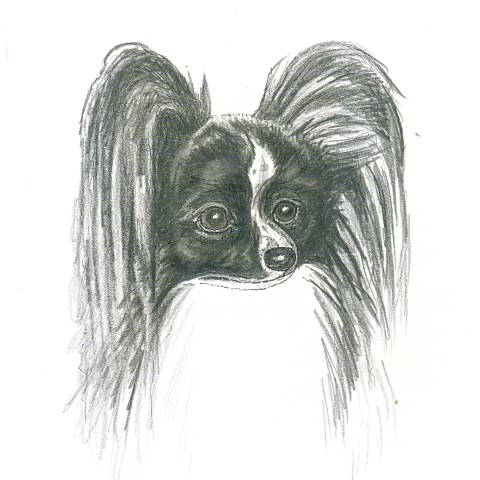 |
| E | F |
|
The dog in E has an exceptionally broad forehead blaze, which narrows to a thin strip of white through the stop and extends only to half the muzzle on the right hand side, leaving a heavy block of black under the eyes on the cheek. This type4 of marking detracts from the dogs expression a little and many people would not care for it, though much would depend upon the symmetry of the markings on the left hand side of the face, which cannot be properly seen in this pose. F is perhaps the most deceptive version of this head. Not only is the blaze extremely narrow and asymmetrical, there is almost no white marking on the right hand side of the muzzle. There is spotting to what little of the blaze that does exist (which some regard more of a fault than others). Furthermore this dog is so densely, richly black that nearly all of the light is absorbed making details of the head even more difficult to pick out. Note how the large expanse of black extending right to the dog's lips gives the expression of a much rounder head than it actually is. |
|